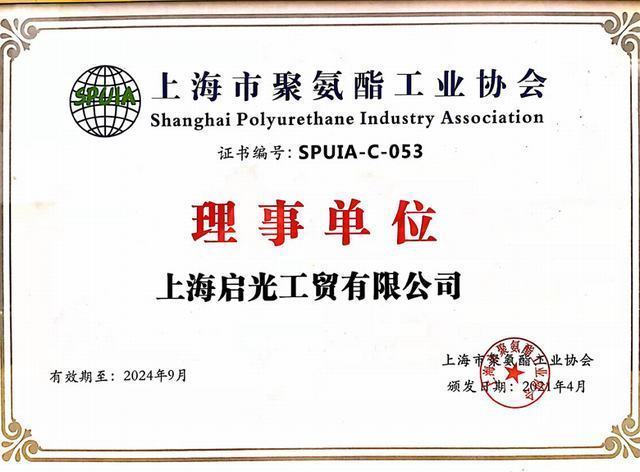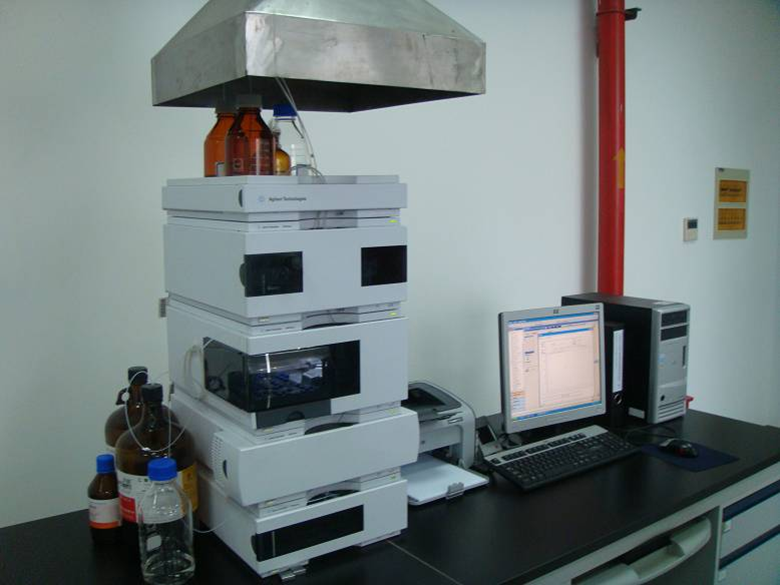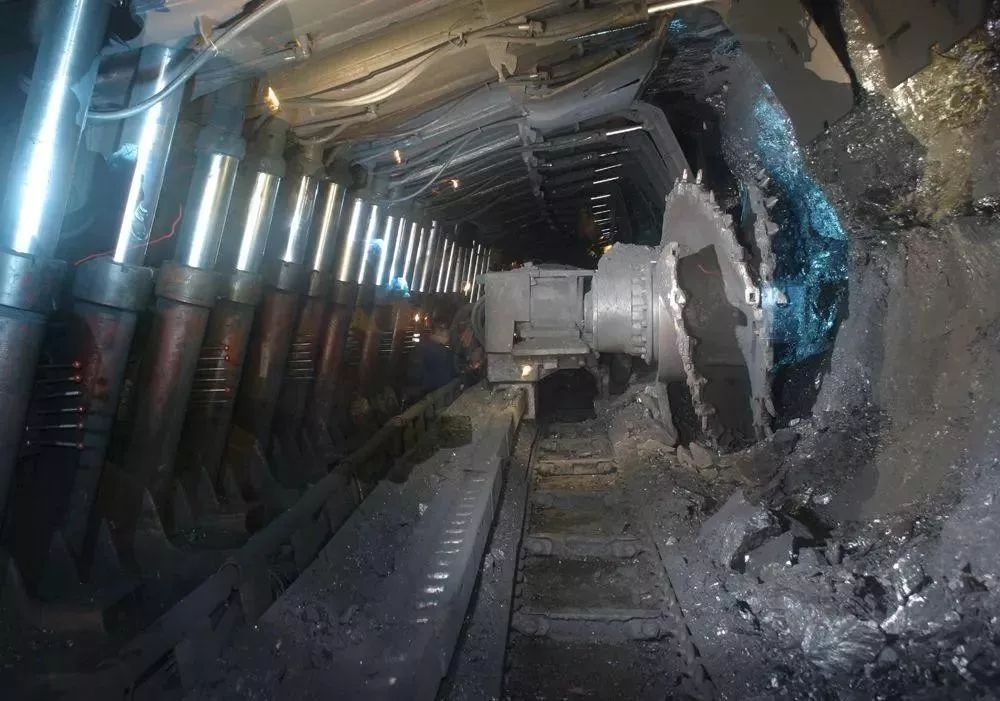1. The most important thing to calculate in the rigid foam composite material is whether the ratio of black and white materials (weight ratio) is reasonable. Another formal term seems to be whether the “isocyanate index” is reasonable. Translated into dialect, it means “by weight” The white materials and black materials mixed in proportion must be completely reacted.” Therefore, everything in the white material that participates in the reaction with -NCO should be taken into consideration. The theoretical molar amount of -NCO consumed by each component is calculated as follows

㈠ Main ingredients: polyether, polyester, silicone oil (ordinary hard foam silicone oils have hydroxyl values, because they are diluted with diethylene glycol, and some foam stabilizer silicone oils also contain amino groups). The formula number is multiplied by their respective The hydroxyl value is then added to get the number Q, S1 = Q÷56100
Water: The formula amount of water W S2 = W÷9
(iii) Small molecules that participate in the consumption of -NCO: the formula amount is K, its molecular weight is M, and its functionality is N S3 =K×N/M (if two or more small molecules are used, they need to be calculated separately and then added together) S = S1+S2+S3
The amount of crude MDI required for the basic formula [(S×42)÷0.30]×1.05 (so-called isocyanate index 1.05)
In fact, the above calculation is just the most basic consumption. Due to the complex reaction process of black and white materials, the actual consumption of -NCO must be more than this number. For example, if there is a trimerization catalyst, no one can say how much additional -NCO is consumed. Be clear. In addition, there is moisture in the polyether, and if it is higher than 0.1%, it will be very serious. The hydroxyl value of the polyether can also be determined from other people’s leaflets. I have seen polyether hydroxyl values ranging from 90 mgKOH/g. After calculating the number, you can only refer to it. You can’t be serious!

Important requirements and instructions for this combined material system
1. The fluidity should be good and the density distribution should be as uniform as possible. First, we must consider the viscosity. Only when the viscosity of the system is small will the initial fluidity be good (the average viscosity of the main component is below 6000mPa.S, and the combined material is below 350mPa.S). Secondly, the potassium and sodium ions in the system must be controlled at a low limit. (within 20ppm), which can control and avoid the trimerization reaction in advance, that is, the system viscosity increases prematurely. If the fluidity is poor, drawing marks will appear when the foam material travels to the far end of the injection port, causing the cell structure to become rugby-balled. This location must not be able to withstand low-temperature shrinkage.
2. The cells are fine and the thermal conductivity is low. It is not difficult to understand that fine cells are the first prerequisite for low thermal conductivity. At this time, we first consider adding 403 or certain aromatic amine ethers into the system (their role is to first react with -NCO, and their products react with other components The mutual solubility and emulsification stability are improved, and the nucleation stability of the foaming system is ensured in the early stage, that is, foaming is avoided, thereby making the cells finer.) Secondly, the polyether itself is foamed alone, and its cell structure is better (for example, starting with sorbitol 635SA has much finer and more uniform cells than 1050 starting with sucrose, and 835 containing glycerin as a starting agent is finer than 1050. Even the so-called 4110 grade polyether, the one starting with propylene glycol is better than the one starting with diethylene glycol. Good. Different polymerization catalysts are used in polyether production, and the properties of the polyether produced are also different: the molecular weight distribution of polyether catalyzed by potassium hydroxide is narrower than that catalyzed by dimethylamine. In addition: process control during polyether production – temperature Control, vacuuming, PO – that is, propylene oxide flow control, PO raw material quality, post-processing, etc. – will also directly affect the cell structure of polyether foaming) Third, you can consider adding some ingredients that can improve the fineness of the cells. Density polyester composition. Fourth, appropriately add low-viscosity substances to adjust the overall viscosity (such as 210 polyether)
3. Better low temperature resistance and shrinkage resistance. This goes without saying. One is functionality, the overall average is above 4. Secondly, the spatial cross-linking points are evenly distributed after the foam is formed (the intuitive explanation is: the reactivity of the main polyethers should be as similar as possible, and the continuous approximate spatial structure is much more stable.)
4. Good adhesion. The so-called adhesion on the surface refers to the adhesion between the foam and the outer shell and liner of the refrigerator or freezer. In fact, it refers to the flexibility of the foam and its resistance to shrinkage (moisture content, reducing the overall hydroxyl value, adding a flexible structure Ingredients, such as 210, 330N, etc. can improve the adhesion of the foam to the shell)
5. Lower cost. At present, the competition in the refrigerator and freezer industry is fierce, and the performance is excellent.No one can afford expensive combination materials, so we must consider the cost (for example, aromatic polyester is cheaper than polyether, so you can add some.)
6. Security. This is a special requirement for the cyclopentane system (at least cyclopentane cannot be added as much as you want like F11. It is not difficult to understand that adding more cyclopentane has greater safety risks)
7. Ensure the continuous stability of the foaming production process. Refrigerator and freezer continuous production lines are generally very stable in control, but occasional fluctuations in process parameters are not ruled out. For example, the material temperature and ambient temperature are one or two degrees higher, and the proportion of black and white materials is small. Fluctuations within the range, etc., so the combined materials are required to have a certain degree of “tolerance”
8. Black material compatibility. Each type of black material has different properties and activities. Therefore, it is sometimes very necessary to adjust the white material system. (It’s okay to cooperate with 5005, but it does not mean that you can switch with 44v20 at will)
Selection direction of main polyether polyester

1. Compatibility. It means that the system composed of “polyether, polyester/silicone oil/water/catalyst/physical foaming agent” must have good mutual solubility and be homogeneous and stable – at least it must be stored for a period of time without stratification.
2. Functional composition and skeleton type. In principle, the higher the functionality, the more “ideal” the physical properties of the foam (dimensional stability, compressive strength, etc.) will be. However, the viscosity of polyethers with high functionality is often higher (more PO can also reduce the viscosity). , the price cannot come down), so on average, 4 functionalities can be dealt with only so-so; In addition, if an aromatic structure (benzene ring) is introduced into the polyether system, it will undoubtedly improve the physical properties of the foam.
3. Reactive. Polyethers containing primary hydroxyl structures (and small molecule cross-linking agents such as triethanolamine) are highly active, but will more or less affect the fluidity in the middle and late stages of the foaming reaction. Therefore, the amount added must be controlled within a certain range.
4. Hydroxy value matching. Based on the amount of water and the preset ratio of black and white materials, the average hydroxyl value range of the main component can be roughly back-calculated, which is generally 380-410mgKOH/g
5. Economical. Not only does it mean that the purchase price of polyether and polyester is low, but the proportion of black and white materials should also be considered in other aspects. After all, the price of black materials is now high.
6. Convenience of purchasing from the market. It took a lot of effort to adjust a formula, but as a result, the raw materials on the market are only useful to you and others will not care about them. Unless you are very wealthy and use a huge amount every month, whether the supply of ingredients can be guaranteed depends on the shallowness of “friendship”.
Selection of foaming agent (silicone oil)
1. Compatibility with other ingredients of the combination. This is not difficult to understand, otherwise, silicone oil manufacturers would not compile so many models – F11 type, 141B type, cyclopentane type, all-water type, polyester type, sucrose polyether type, etc. Proper selection of silicone oil models can significantly control the thermal conductivity to a minimum.
2. Compatibility with black materials and nucleation ability. Not many people pay attention to this. In fact, in most cases, “poor cells” are caused by the “insufficient emulsifying ability of the silicone oil for the entire system of black and white materials”.
3. Liquidity. Silicone oil that can make the cells of the foaming system become finer can significantly improve the fluidity of foaming. Another evidence is that the foaming speed is slightly accelerated.
4. Stability and dosage. Some silicone oils will gradually deteriorate when exposed to water, alkaline catalysts, chlorine-containing foaming agents or chlorine-containing flame retardants; some require an increased dosage (more than 2.5%) to show that they are silicone oils.
5. Price. If you can get it at 22 yuan/kg, you don’t have to use the imported 45 yuan/kg. You must know that the price difference is over 200 yuan if there are 14kg of silicone oil per ton of the combined material.
Determination of water share
1. Adhesion. If a large amount of water is used, the surface of the bubble body will be brittle and the adhesion to the shell surface will be poor. Generally, the water consumption of refrigerators and freezers is 1.7-2.3% (specifically refers to the 141B system and cyclopentane system)
2. Selection of physical foaming agent system. Nowadays, everyone is shouting about environmental protection, and 141B has long been said to be used in limited quantities, but there are actually F11 (or blended F11) combination materials on the market. The water consumption has to be adjusted according to the price: F11 type – 0.6/1.6, 141B type – 1.7/2.2, cyclopentane type – 2.0/2.4
3. Economical. Water is indeed very cheap, but if it is used too much, the amount of black material will have to be added, so there is a high chance that it is not cost-effective (naturally, the customer who uses the combined material will pay the bill.
Determination of catalytic system
1. Early requirements. In the past, many friends thought that milky white hair would start slowly, and they would wait until the material flowed thinly to the bottom of their respective “stations” before straightening. In fact, it is not the case. Firstly: liquid material can easily leak out from the gaps in the box and cause dirt to stick to the mold; secondly: it affects the density and overall structure of the cells, thereby increasing the thermal conductivity of the foam; thirdly: the faster the rise speed, the more It will speed up the traveling speed of foam material. Generally speaking, the best time to release the gun is 6-8 seconds.
2. Medium-term flow. During the foaming and shaping period, the longer the mid-term flow period (drawing time minus milky whitening time), the better. This can ensure that the foam fills every corner of the box without seriously deforming the cells. The most ideal state is that 3-5 seconds before drawing starts, the foam material has been filled in place, and there is obvious leakage of material in the farthest vent hole.
3. Post-curing. This requirement does not need to be too strict. Anyway, the mold is not cold during continuous production. If the production line has an insulated kang road, there is no need to worry about not being able to harvest the crops when they expire.
4. Recommended combinations. Am-1 + cyclohexylamine .
. Generally speaking, the best time to release the gun is 6-8 seconds.
2. Medium-term flow. During the foaming and shaping period, the longer the mid-term flow period (drawing time minus milky whitening time), the better. This can ensure that the foam fills every corner of the box without seriously deforming the cells. The most ideal state is that 3-5 seconds before drawing starts, the foam material has been filled in place, and there is obvious leakage of material in the farthest vent hole.
3. Post-curing. This requirement does not need to be too strict. Anyway, the mold is not cold during continuous production. If the production line has an insulated kang road, there is no need to worry about not being able to harvest the crops when they expire.
4. Recommended combinations. Am-1 + cyclohexylamine .